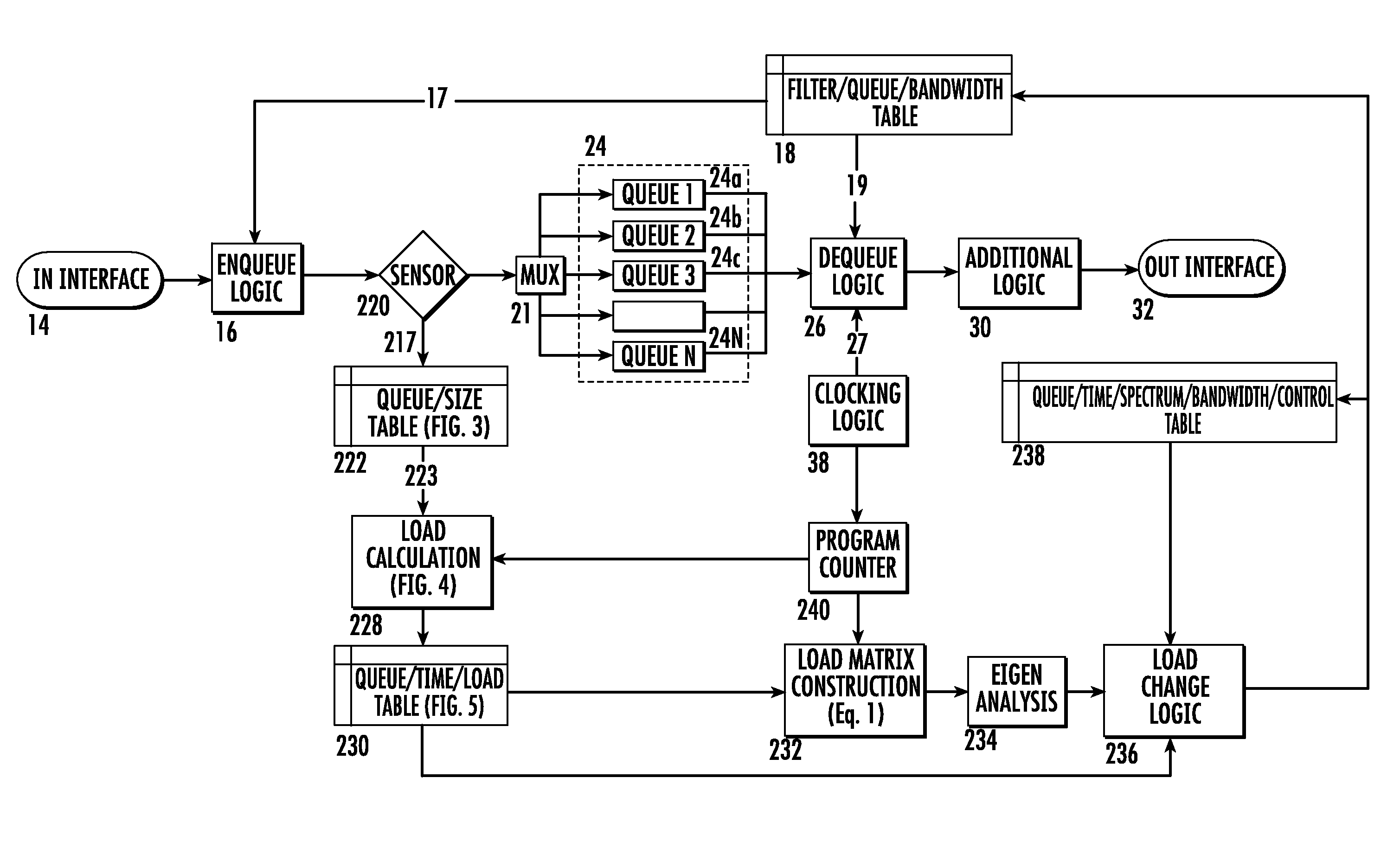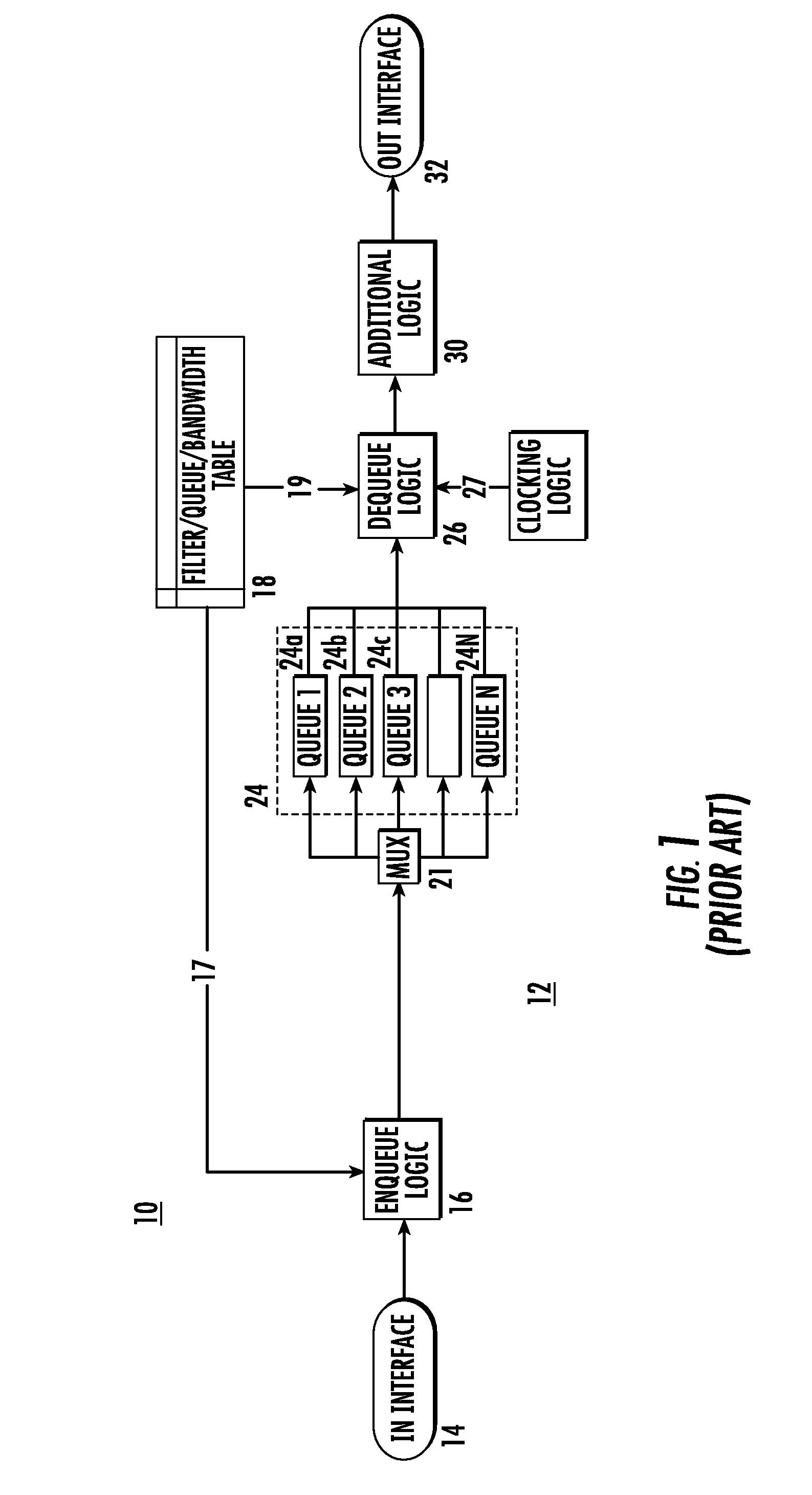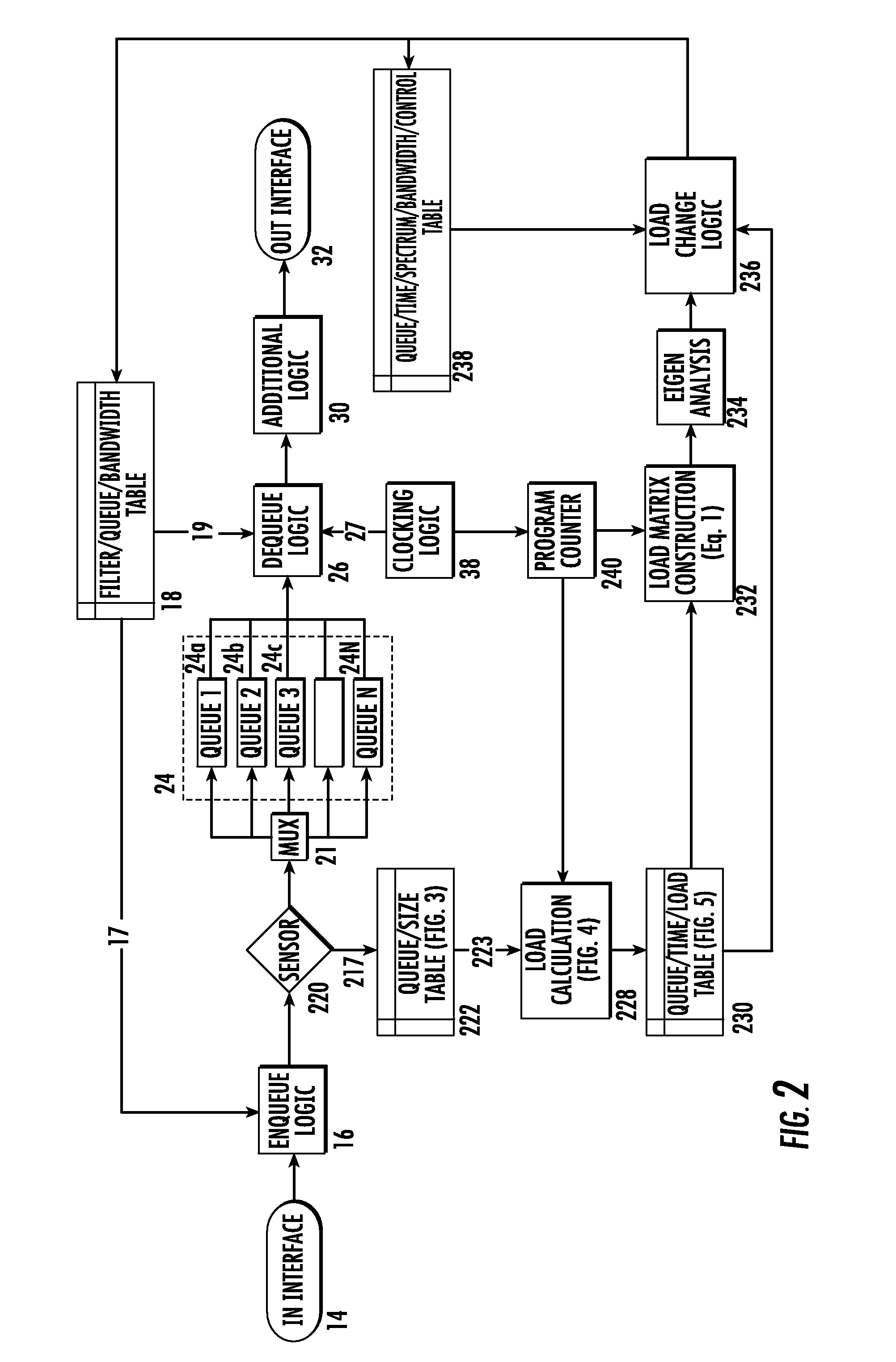Adaptive network traffic shaper
a network traffic and shaper technology, applied in the field of adaptive network load control, can solve the problems of high difficulty, low priority traffic can have significant impact, and errors in estimating requirements can have serious consequences for critical applications
- Summary
- Abstract
- Description
- Claims
- Application Information
AI Technical Summary
Benefits of technology
Problems solved by technology
Method used
Image
Examples
Embodiment Construction
[0026]FIG. 2 is a simplified diagram of a portion of a network 210 including an adaptive traffic shaper 212 according to an aspect of the invention. Elements of FIG. 2 corresponding to those of FIG. 1 are designated by like reference alphanumerics. In FIG. 2, an IN interface 14 connects to a high-bandwidth network (not illustrated) that is the source of packets bound for a lower-bandwidth network (also not illustrated). The packets from IN interface 14 is / are applied to an input of enqueue logic illustrated as a block 16. Enqueue logic 16 marks the packets with priority information pursuant to the QoS policy embodied in the filter / queue / bandwidth (F / Q / B) table 18. The processing in enqueue logic 16 may be viewed as implementing a set of filters, the properties of which are set by policy information from block 18, and against which the packets are compared, one after another, to determine their destination queue. The queue that is chosen corresponds to the first filter that matches t...
PUM
 Login to View More
Login to View More Abstract
Description
Claims
Application Information
 Login to View More
Login to View More - R&D
- Intellectual Property
- Life Sciences
- Materials
- Tech Scout
- Unparalleled Data Quality
- Higher Quality Content
- 60% Fewer Hallucinations
Browse by: Latest US Patents, China's latest patents, Technical Efficacy Thesaurus, Application Domain, Technology Topic, Popular Technical Reports.
© 2025 PatSnap. All rights reserved.Legal|Privacy policy|Modern Slavery Act Transparency Statement|Sitemap|About US| Contact US: help@patsnap.com



